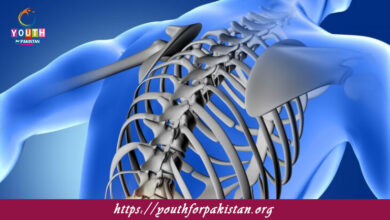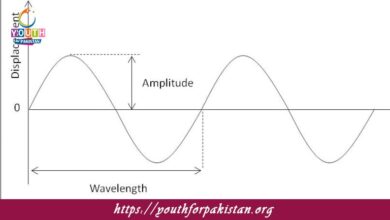Concepts Of Evolution MDCAT MCQs with Answers

Welcome to the Concepts Of Evolution MDCAT MCQs with Answers. In this post, we have shared Concepts Of Evolution Multiple Choice Questions and Answers for PMC MDCAT 2024. Each question in MDCAT Biology offers a chance to enhance your knowledge regarding Concepts Of Evolution MCQs in this MDCAT Online Test.
The concept of evolution refers to:
a) The gradual change in species over time
b) The immediate adaptation of organisms to their environment
c) The creation of new species without change
d) The sudden appearance of new traits
The idea that all species of life have descended from common ancestors is known as:
a) Common descent
b) Natural selection
c) Genetic drift
d) Adaptation
Which scientist is most closely associated with the theory of evolution by natural selection?
a) Charles Darwin
b) Gregor Mendel
c) Jean-Baptiste Lamarck
d) Alfred Russel Wallace
Darwin’s theory of natural selection includes which of the following key components?
a) Variation, inheritance, competition, and selection
b) Use and disuse, inheritance of acquired traits
c) Genetic mutations and genetic drift
d) Neutral theory and gene flow
Which concept explains the gradual change in a species over time through small, incremental changes?
a) Gradualism
b) Punctuated equilibrium
c) Catastrophism
d) Lamarckism
Punctuated equilibrium, proposed by Eldredge and Gould, suggests that:
a) Evolution occurs in rapid bursts followed by long periods of stability
b) Evolution happens slowly and gradually over time
c) Species remain unchanged for long periods
d) All evolutionary changes are gradual and constant
Which of the following best describes genetic drift?
a) Random changes in allele frequencies due to chance events
b) The non-random selection of traits favorable for survival
c) The movement of genes between populations
d) The gradual adaptation of organisms to their environment
Natural selection leads to:
a) The adaptation of organisms to their environment
b) Random changes in genetic material
c) Immediate and drastic changes in species
d) The inheritance of traits acquired during an organism’s lifetime
The study of fossils and their distribution across different layers of sedimentary rock is known as:
a) Paleontology
b) Genetics
c) Ecology
d) Evolutionary biology
Homologous structures are:
a) Structures in different species that are similar due to common ancestry
b) Structures in unrelated species that serve similar functions
c) Traits acquired through environmental adaptation
d) Genetic mutations occurring in isolated populations
The concept of “survival of the fittest” is most closely associated with:
a) Natural selection
b) Genetic drift
c) Punctuated equilibrium
d) Adaptive radiation
Which of the following provides evidence for evolution through comparative anatomy?
a) Homologous and analogous structures
b) Genetic mutation rates
c) Random genetic drift
d) Fossilized footprints
Adaptive radiation refers to:
a) The rapid evolution of a single ancestor species into diverse forms
b) The gradual disappearance of species over time
c) The uniform evolution of traits across a population
d) The random loss of alleles in a small population
Which concept suggests that evolution proceeds in spurts of rapid change interspersed with periods of stability?
a) Punctuated equilibrium
b) Gradualism
c) Natural selection
d) Genetic drift
The term “fitness” in evolutionary biology refers to:
a) The ability of an organism to survive and reproduce in its environment
b) The physical strength of an organism
c) The number of traits an organism possesses
d) The speed at which mutations occur
Which of the following is a key piece of evidence for the theory of evolution by natural selection?
a) The fossil record showing transitional forms
b) The uniformity of traits within a population
c) The constant rate of genetic mutations across species
d) The lack of genetic variation in a population
The concept of genetic variation is crucial for:
a) Evolution by natural selection
b) The inheritance of acquired traits
c) The stability of species
d) The absence of evolutionary change
Which of the following best describes the concept of “descent with modification”?
a) Species evolve over time with new traits being inherited and modified
b) Species remain unchanged over generations
c) Evolution occurs through sudden, dramatic changes
d) Traits acquired during an organism’s lifetime are inherited unchanged
Which of the following is an example of an analogous structure?
a) The wings of a butterfly and a bird
b) The forelimbs of mammals
c) The flippers of dolphins and whales
d) The bones of vertebrate limbs
The concept of “evolutionary convergence” refers to:
a) The process by which unrelated organisms independently evolve similar traits
b) The merging of different species into a single lineage
c) The genetic isolation of populations
d) The continuous gradual change of a species over time
The “modern synthesis” in evolutionary biology refers to:
a) The integration of Darwin’s theory of natural selection with Mendelian genetics
b) The rejection of natural selection in favor of Lamarckian evolution
c) The discovery of the role of genetic drift in evolution
d) The analysis of fossil records to understand species formation
Which of the following is an example of a vestigial structure?
a) The human appendix
b) The wings of a bat
c) The eyes of a blind fish
d) The flippers of a penguin
Natural selection acts on:
a) Phenotypes (observable traits)
b) Genotypes (genetic makeup)
c) Allele frequencies in a gene pool
d) Environmental factors directly
The theory of evolution by natural selection is based on which of the following observations?
a) Individuals with advantageous traits are more likely to survive and reproduce
b) All organisms evolve at the same rate
c) Evolutionary changes are immediate and radical
d) Traits acquired during an organism’s lifetime are inherited unchanged
Which of the following provides evidence for the process of evolution through embryonic development?
a) Similarities in early embryonic stages among different species
b) The presence of analogous structures in adults
c) The fossil record of extinct species
d) The adaptation of species to specific environments
If you are interested to enhance your knowledge regarding Physics, Chemistry, Computer, and Biology please click on the link of each category, you will be redirected to dedicated website for each category.




